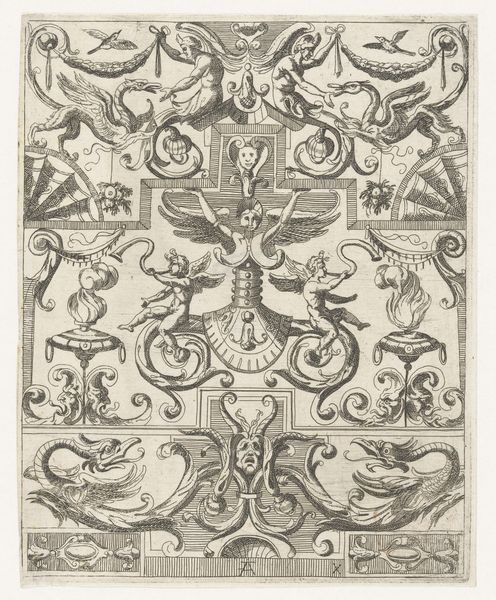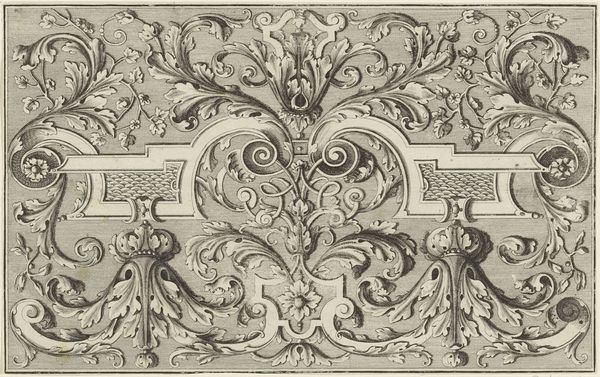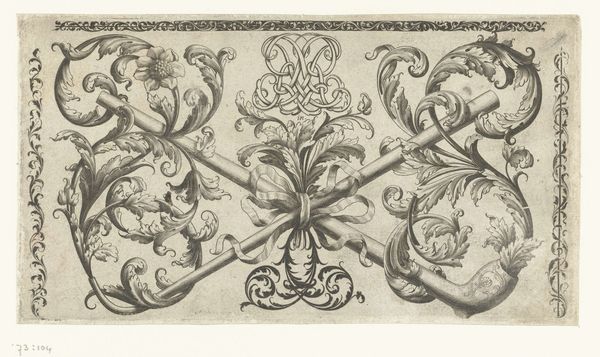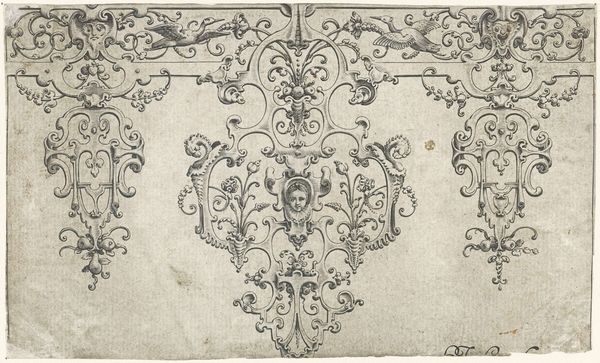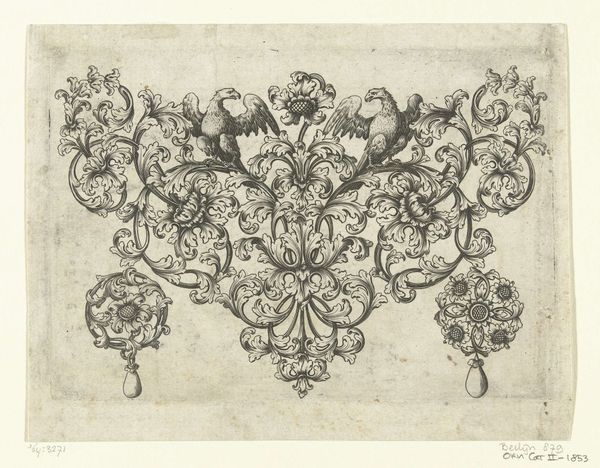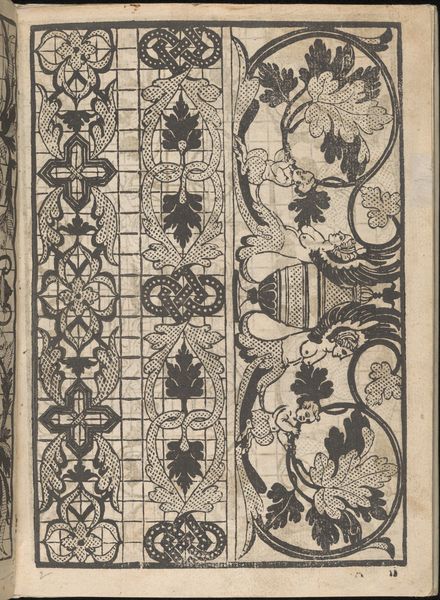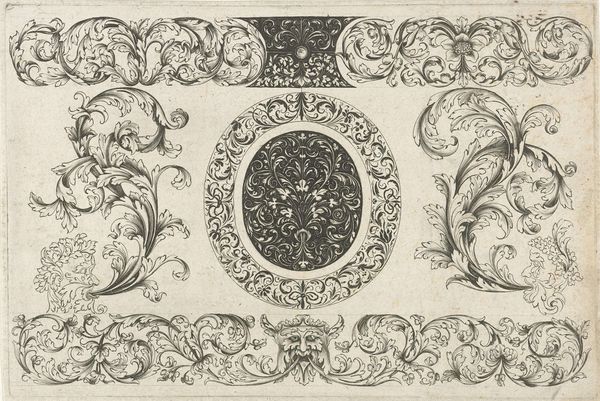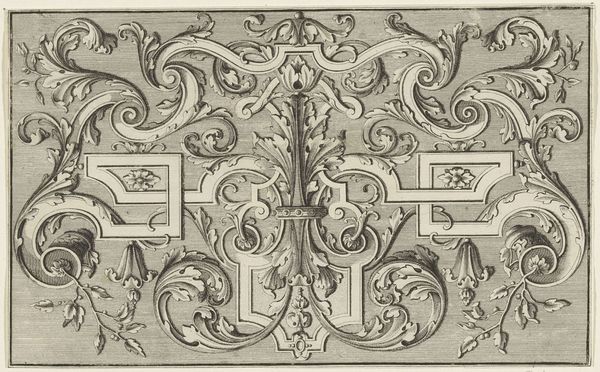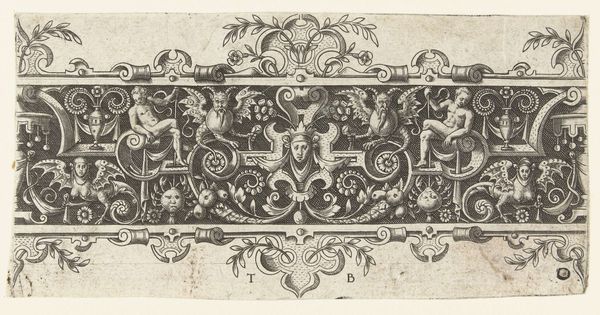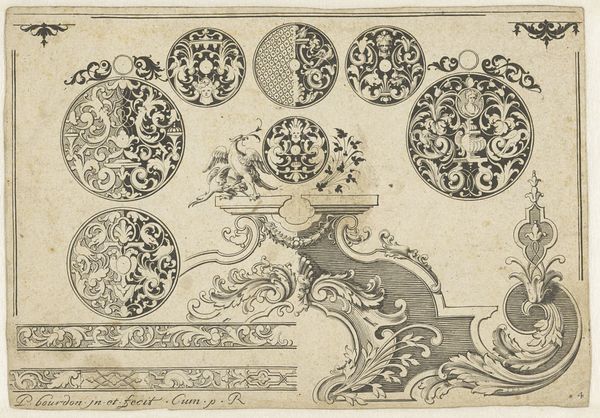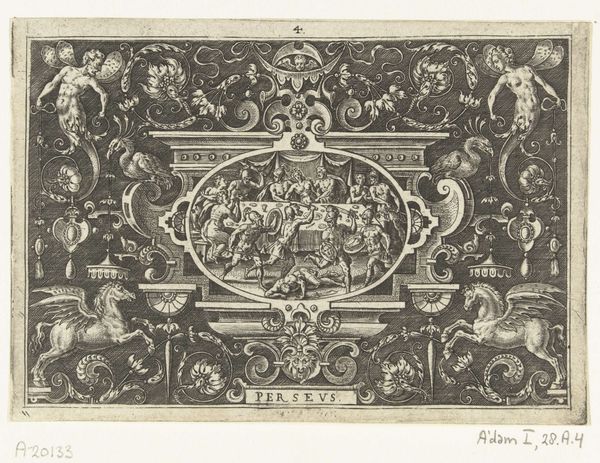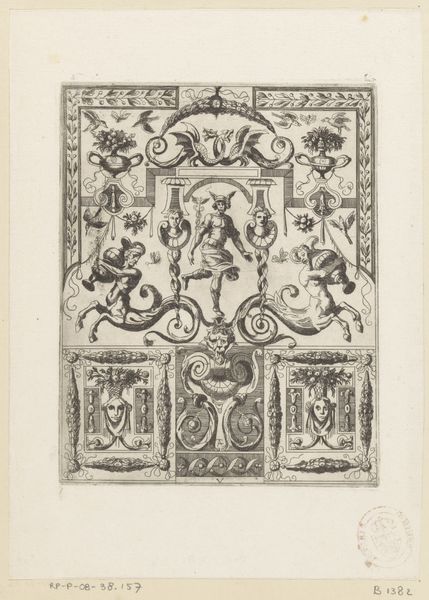
print, engraving
# print
#
11_renaissance
#
geometric
#
intricate pattern
#
pattern repetition
#
northern-renaissance
#
engraving
Dimensions: height 136 mm, width 205 mm
Copyright: Rijks Museum: Open Domain
Curator: Welcome. Before us is “Plafond, met in het midden een Medusahoofd,” a 1566 engraving by Pieter van der Heyden, currently held in the collection of the Rijksmuseum. Editor: The first thing that strikes me is the complexity—it's almost dizzying. The high level of detail, rendered meticulously in black and white, suggests a very disciplined and intellectual approach to design. Curator: Indeed. Let's start with the most prominent symbol: Medusa's head at the center. In classical mythology, Medusa represents a fearsome, protective power, capable of warding off evil. Her image here suggests that this ceiling design intended to imbue the space beneath with a sense of security, almost a magical protective field. Editor: I’m also intrigued by how the Medusa head is embedded within all these geometric forms and repetitive patterns. There's an almost mathematical rigor in its construction. You've got squares, diamonds, circles, interwoven lines creating compartments – it gives a sense of Renaissance order, doesn’t it? Curator: Precisely! The Renaissance was obsessed with mathematical order and classical forms. This design exemplifies that fascination. Look closer: interspersed throughout the geometric framework are also these cherubic figures. Their inclusion adds a layer of allegorical richness to the composition. They almost seem contained within the grid, as though representing something greater needing careful balance. Editor: A tension then between the rational structure and this hint of emotional or spiritual significance. I suppose in that regard, this piece mirrors the broader currents of the Northern Renaissance itself: reason versus faith. What do you make of the fact this was created as a print? Wouldn't that imply wider dissemination of this sort of design for domestic use? Curator: Absolutely. The engraving technique allowed for wider distribution of such patterns to be accessible beyond the sphere of wealthy patrons commissioning unique ceilings. Thus, it aided to disseminate renaissance aesthetics more widely. The circulation of images became integral to defining what "good taste" actually meant at the time. Editor: Looking at this work, I can appreciate the power that such portable artworks would carry at the time. They allowed a transfer of not only artistry, but, essentially, symbolic messaging and ideology across places. Curator: A superb final note on its enduring resonance, don't you agree? Editor: Indeed. Thank you.
Comments
No comments
Be the first to comment and join the conversation on the ultimate creative platform.
